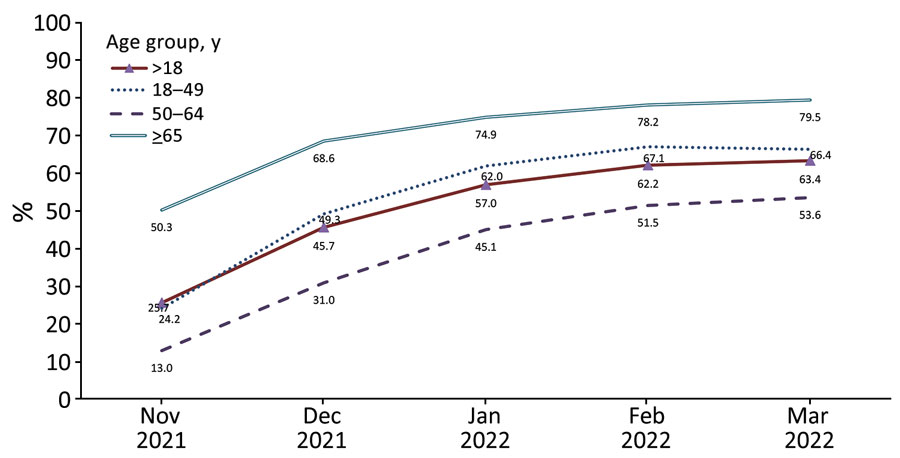Volume 29, Number 1—January 2023
Research
COVID-19 Booster Dose Vaccination Coverage and Factors Associated with Booster Vaccination among Adults, United States, March 2022
Figure

Figure. Trends in COVID-19 booster dose vaccination coverage among fully vaccinated adults, by age group, National Immunization Survey–Adult COVID Module, United States, November 2021–March 2022.
Page created: November 04, 2022
Page updated: December 21, 2022
Page reviewed: December 21, 2022
The conclusions, findings, and opinions expressed by authors contributing to this journal do not necessarily reflect the official position of the U.S. Department of Health and Human Services, the Public Health Service, the Centers for Disease Control and Prevention, or the authors' affiliated institutions. Use of trade names is for identification only and does not imply endorsement by any of the groups named above.